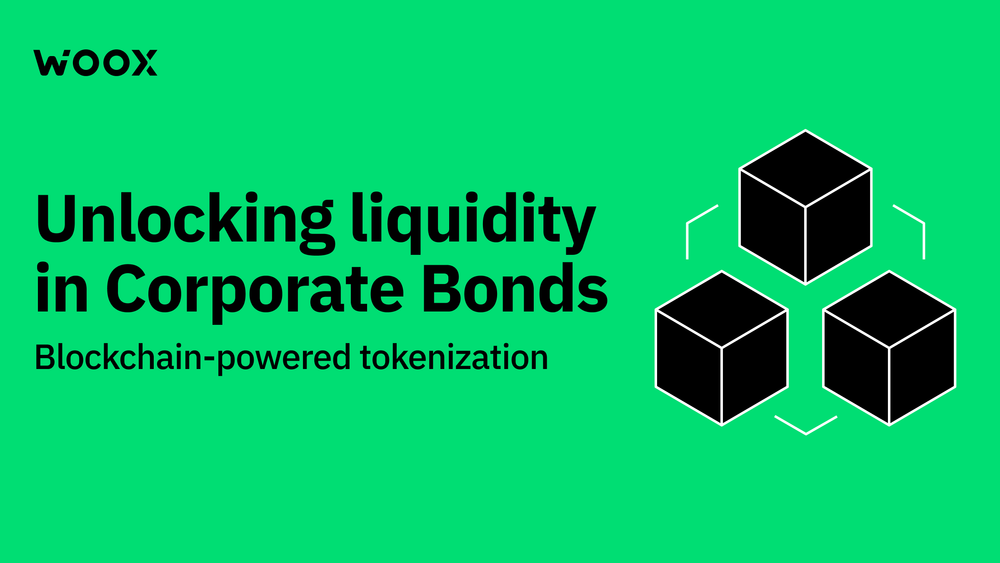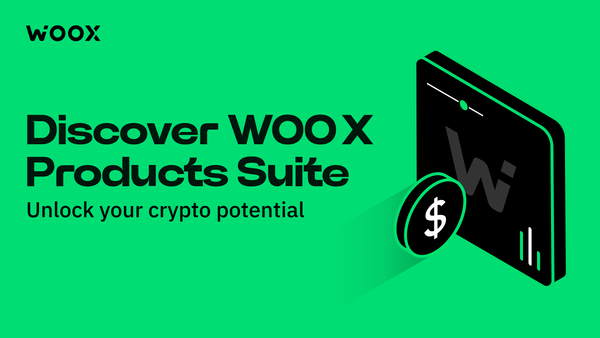Tokenized Corporate Bonds: Unlocking liquidity and efficiency with blockchain for investors and issuers
A detailed comparison of how blockchain-based tokenization enhances corporate bond investing and issuance
Summary
Tokenized corporate bonds are changing the way fixed-income investments work by using blockchain technology. They allow investors to buy small parts of a bond, speed up transactions, increase transparency, and make it easier for more people to invest. This helps create a fairer and more efficient market for raising capital.
Key topics covered:
- Overview: Definition and significance of tokenized corporate bonds in digital finance.
- Benefits: Enhanced liquidity, automation via smart contracts, cost reduction, and fractional ownership democratizing access.
- Why now?: Market inefficiencies in liquidity, settlement delays, and limited investor participation driving tokenization adoption.
- Market growth: Rapid expansion projections with major institutional backing and increasing market confidence.
- Investor & issuer use cases: Practical advantages and applications for both market participants.
- Regulatory environment: Evolving frameworks ensuring compliance, investor protection, and market integrity.
- Challenges & risks: Legal, technological, and adoption hurdles alongside mitigation efforts.
- Future outlook: Tokenized corporate bonds poised for transformative growth, becoming a major asset class by 2030.
Introduction
Tokenized corporate bonds are redefining the fixed-income landscape by merging traditional corporate debt with cutting-edge blockchain technology. These bonds are no longer just paper or digital records as they are secure, programmable tokens that unlock faster, more transparent, and cost-efficient capital raising. By enabling fractional ownership and automated processes via smart contracts, tokenized bonds break down barriers, creating an open, dynamic market accessible to a broader range of investors.
The global asset tokenization market is accelerating at an unprecedented pace, projected to surpass $1.2 trillion in 2025 and poised to evolve into a multi-trillion-dollar ecosystem by 2030. Corporate bonds, as prime real-world assets, are leading this shift by fueling greater market liquidity and operational efficiency.
Key benefits of tokenized bonds include enhanced liquidity, seamless operational automation, increased transparency, expanded investor access, and significantly lower costs. Fractionalization democratizes bond investing by allowing retail and smaller investors to participate alongside traditional institutional players, overturning historical minimum investment thresholds.
By fusing the immutable security of blockchain with programmable smart contract technology, tokenized corporate bonds are set to revolutionize capital markets—emerging as the foundation of a more efficient, accessible, and innovative fixed-income future.
This article dives deep into the current state of tokenized corporate bonds and explores the promising future that lies ahead.
Benefits of tokenized corporate bonds
Tokenized corporate bonds leverage blockchain and smart contracts to revolutionize bond issuance, management, and trading. By digitizing conventional debt instruments into secure blockchain tokens, they deliver unmatched transparency, and operational efficiency with minimal manual intervention.
Smart contracts
Central to this innovation is smart contract automation that manages vital bond lifecycle events—coupon payments, principal redemptions, and compliance checks—eliminating manual errors, reducing costs, and accelerating settlements from days to near real-time. The blockchain ledger guarantees immutable, auditable records of ownership and transactions, minimizing fraud risk.
Intermediaries reduction
Perhaps the most disruptive advantage lies in drastically reducing reliance on intermediaries such as custodians, clearinghouses, and transfer agents. This disintermediation streamlines the value chain, cuts costs for issuers and investors, and enables 24/7 trading, unrestricted by traditional market hours.
Fractional ownership
Tokenization also unlocks previously inaccessible markets through fractional ownership. Corporate bonds traditionally required large minimum investments, limiting participation to institutional investors. Now, retail and smaller investors can purchase bond fractions, broadening the investor base, increasing liquidity, and enabling richer market depth.
Regulatory frameworks
Regulatory frameworks are evolving rapidly to support this new asset class, embedding investor protections, securities laws, and rigorous AML/KYC standards into token design and issuance. These clearances build institutional trust and market integrity.
Looking beyond issuance
Use cases extend beyond issuance to include debt refinancing, capital structure optimization, diversified portfolios, and active trading on emerging digital exchanges. Tokenized bonds fuel new financial innovations, such as liquidity pools and structured fixed-income products thus creating unparalleled opportunities for investors and issuers worldwide.
In summary, tokenized corporate bonds represent an innovation tool in fixed-income finance by delivering faster execution, greater accessibility, lower costs, and new avenues for innovation and market growth.
Investor benefits & use cases
Tokenized corporate bonds deliver tangible advantages tailored to a broad spectrum of investors, from individual retail participants to sophisticated institutional asset managers.
- For retail investors, fractional ownership unlocks access to fixed-income markets traditionally out of reach due to high minimum investment thresholds. This democratization enables portfolio diversification strategies with lower capital requirements and enhanced liquidity through token transferability on digital exchanges.
- For Institutional investors, the benefit from streamlined operations, faster settlement, and improved transparency through blockchain’s immutable ledger. The near real-time transaction capability reduces counterparty risks and operational costs, allowing fund managers to optimize portfolio rebalancing and risk management.
Additionally, tokenization supports innovative structured products and liquidity pools, providing new tools to enhance yield generation and manage duration.
Use cases include income-focused investments via automated coupon payments, tactical entry and exit through liquid secondary markets, and accessing niche debt segments such as private credit or sustainable corporate bonds. The holistic benefits significantly improve investor agility, cost efficiency, and access to diverse fixed-income strategies.
Issuer advantages & use cases
For corporate issuers, tokenization revolutionizes capital raising by enabling faster, more efficient debt issuance with broader investor reach. By digitizing bonds into tradeable tokens, issuers tap into a global investor pool comprising retail and institutional participants alike, reducing dependence on large, concentrated buyers and increasing pricing efficiency.
Operationally, automation of bond servicing tasks such as including coupon distributions and compliance monitoring via smart contracts can lower administrative burdens and mitigates settlement risks. This reduces time and costs associated with legacy processes dependent on multiple intermediaries.
Tokenized bonds also facilitate innovative refinancing and capital structure optimization strategies, allowing issuers to tailor tranche sizes and maturities dynamically to investor demand. Companies pioneering tokenized debt issuance report improved transparency and investor engagement, potentially lowering overall funding costs and enhancing corporate reputation.
Examples include pilots by major corporates and financial institutions leveraging tokenization to access new liquidity channels and optimize debt portfolios with greater flexibility by validating the transformative potential of this technology in corporate finance.
Why is it trendy now?
Corporate bonds have long been viewed as stable, income-generating assets primarily accessed by institutional investors seeking predictable returns. However, several entrenched challenges have limited broader market participation, liquidity, and efficiency.
Liquidity remains a primary obstacle
Unlike equities traded on centralized exchanges, corporate bonds mostly trade over-the-counter (OTC), resulting in fragmented, opaque pricing and infrequent transactions. Post-financial crisis regulatory reforms have reduced market makers’ risk-taking capacity, leading to wider bid-ask spreads and diminished liquidity.
Settlement processes compound inefficiency
Conventional bond trades often take one to two business days to settle, relying heavily on intermediaries such as clearinghouses. These legacy systems inflate costs, raise settlement risk, and constrain investor responsiveness.
Credit risk is still there
Moreover, corporate bonds carry inherent credit risk, requiring complex evaluations typically inaccessible to retail investors. Fixed coupon payments and limited capital appreciation profiles can further dampen appeal for investors seeking flexible income or growth.
These challenges underscore a clear need for innovation. Tokenization emerges as a timely and powerful solution by addressing liquidity fragmentation, enhancing pricing transparency, accelerating settlement, and lowering barriers to entry. This explains the growing market focus and rapid adoption of tokenized corporate bonds today.
The rise of tokenized corporate financial instruments
Tokenization fundamentally disrupts traditional fixed-income limitations by transforming corporate bonds into blockchain-based digital tokens. Fractional ownership enhances liquidity by allowing smaller-scale trading and opening markets to retail investors historically excluded due to high minimums.
Smart contract automated settlement enables near-instantaneous transfers, dramatically reducing counterparty and operational risks. By bypassing legacy intermediaries, tokenized bonds significantly cut transaction costs and enabled 24/7 trading on global digital asset exchanges, boosting efficiency and investor flexibility.
Programmed automation extends to coupon payouts and compliance verifications, streamlining bond administration and elevating transparency to unprecedented levels.
Increasing regulatory clarity, paired with growing institutional adoption, is accelerating this paradigm shift. Leading financial firms and asset managers are actively piloting tokenized debt issuances, reflecting confidence that tokenization democratizes access, enhances liquidity, slashes inefficiencies, and creates new return and diversification opportunities for investors.
In essence, tokenization confronts core fixed-income market pain points—unlocking liquidity, fast settlement, cost reduction, and broader investor inclusion—positioning itself as a cornerstone innovation amid the evolving digital finance ecosystem.
Regulatory landscape & compliance
The regulatory environment surrounding tokenized corporate bonds is evolving rapidly to balance innovation with investor protection and market integrity. Jurisdictions worldwide are developing or adapting comprehensive frameworks that treat tokenized bonds as regulated securities, subject to established rules on disclosure, custody, and trading.
Key regulatory pillars include adherence to securities laws governing issuance, robust anti-money laundering (AML) and know-your-customer (KYC) protocols embedded directly into token lifecycle management, and ongoing transparency requirements. Smart contracts can enforce compliance automatically, reducing manual oversight and enhancing auditability.
Regulators such as the U.S. SEC, Europe’s ESMA, and Singapore’s MAS have issued guidance or frameworks encouraging responsible adoption while limiting fraud and systemic risks. Compliance assurances foster institutional trust and consumer confidence, critical to scaling tokenized bond markets.
Furthermore, industry collaborations and regulatory sandboxes are accelerating innovation under supervised conditions, allowing key stakeholders to refine compliance models. As regulatory clarity strengthens, tokenized corporate bonds are heading in the direction of being viewed as credible, fully compliant instruments suitable for broad market adoption.
Markets sizes
The market for tokenized corporate bonds and broader asset tokenization is experiencing explosive growth, signaling a profound transformation of global capital markets. Valued at approximately $865 billion in 2024, the asset tokenization market is projected to surpass $1.2 trillion in 2025, with anticipated expansion to between $2 trillion and $5.2 trillion by the end of this decade. Some forward-looking estimates foresee the market reaching as high as $30 trillion by 2030-2034, driven by enhanced regulatory clarity and maturing technological infrastructure.
Real-world assets (RWAs), such as corporate bonds, are the primary drivers of this surge. Institutional adoption is accelerating rapidly, with over 200 active tokenization projects amassing around $65 billion in total value locked (TVL) as of 2025 which represents an 800% increase since 2023. Leading global financial institutions, including BlackRock, JPMorgan, Franklin Templeton, and Goldman Sachs, are heavily investing in tokenized fixed-income instruments, underscoring rising confidence in this space.
Particularly fast-growing segments include tokenized private credit and treasury assets. Private credit alone now accounts for over $13 billion in tokenized assets this year. The ability to fractionalize large bond issuances into smaller tradable units is unlocking liquidity and expanding market depth, drawing a broader investor base and enhancing portfolio diversification options.
McKinsey projects the tokenized asset market could reach $2 to $4 trillion by 2030, while Boston Consulting Group’s forecasts approach nearly $19 trillion by 2033. This rapid growth trajectory highlights the vast potential of tokenization to democratize access, reduce costs, and redefine capital raising and secondary market trading globally.
Challenges & risks
While tokenized corporate bonds hold transformative potential, several challenges remain as the market matures. Legal and regulatory uncertainties persist in some jurisdictions, with evolving frameworks requiring ongoing adaptation from issuers and platform providers. Navigating complex securities laws, cross-border compliance, and licensing can prolong go-to-market timelines.
Technology risks
Technological risks include the need for robust blockchain infrastructure, smart contract security, and interoperability with legacy financial systems. Vulnerabilities in code or platforms could expose investors to operational or cybersecurity threats, underscoring the importance of rigorous audit and governance practices.
Market adoption barriers also exist
Legacy market participants may resist change due to entrenched processes or concerns over custodial arrangements. Additionally, liquidity in tokenized bond markets is still developing, as secondary trading volumes remain nascent compared to traditional markets.
Educating the investors
Investor education is critical to address the knowledge gap around blockchain assets, fractional ownership, and digital custody. Without widespread understanding and trust, market growth may be constrained.
Despite these challenges, ongoing regulatory clarity, technology innovation, and collaborative industry efforts are steadily mitigating risks. Pilot programs, industry consortia, and regulatory sandboxes are proving effective paths toward ecosystem maturity are all setting the stage for scalable, secure, and liquid tokenized bond markets in the near future.
What does the future look like?
The future of tokenized corporate bonds is poised for transformative expansion and profound impact across capital markets worldwide. Industry projections suggest the tokenized bond market alone could scale from a few billion dollars today to at least $300 billion by 2030, while broader asset tokenization could reach upwards of $30 trillion as on-chain adoption spans bonds, real estate, and other tangible assets.
Fractional ownership
Key growth drivers include enhanced liquidity from fractional ownership, near-instant settlement powered by blockchain, and substantial market accessibility gains by enabling both retail and institutional investors to participate on unprecedented terms.
Automation
Automated smart contract execution of coupon payments, principal redemptions, and regulatory compliance will dramatically reduce operational costs and counterparty risks, further boosting market efficiency.
Regulation
Regulatory framework maturation will play a crucial role in mainstream adoption by ensuring investor protections, AML/KYC standards, and full securities compliance. Leading financial institutions and asset managers are moving beyond pilot programs, signaling a shift toward widespread market integration despite ongoing legal and infrastructure challenges.
Market leaders
Asset managers, fintech innovators, and regulatory authorities envision a future where corporate bonds, and ultimately most fixed income instruments, are issued, traded, and managed on blockchain platforms. This evolution promises to reshape capital markets architecture, expand investment opportunities, enable 24/7 market operation, and foster unprecedented transparency and trust.
In summary, tokenized corporate bonds are set to become a foundational pillar of the multitrillion-dollar tokenized asset ecosystem by 2030 therefore unlocking unparalleled liquidity, financial inclusivity, and efficiency in debt markets around the globe.
Disclaimer
The information provided in this article is for general informational purposes only and does not constitute financial, investment, legal, or professional advice of any kind. While we have made every effort to ensure that the information contained herein is accurate and up-to-date, we make no guarantees as to its completeness or accuracy. The content is based on information available at the time of writing and may be subject to change. We make no representations or warranties, express or implied, about the completeness, accuracy, reliability, suitability, or availability with respect to the information, products, services, or related graphics contained in this article for any purpose.
Cryptocurrencies and related products involve significant risk and may not be suitable for all investors. The value of digital currencies and related products can be extremely volatile, and you should carefully consider your investment objectives, level of experience, and risk appetite before participating in any investment activities.
We strongly recommend that you seek independent advice from a qualified professional before making any investment or financial decisions. We shall in NO case be liable for any loss or damage arising directly or indirectly from the use of or reliance on the information contained in this article.


